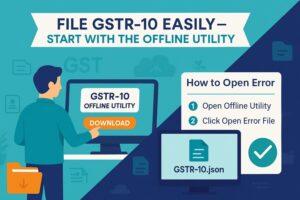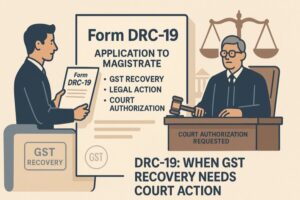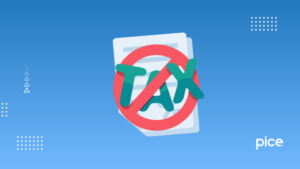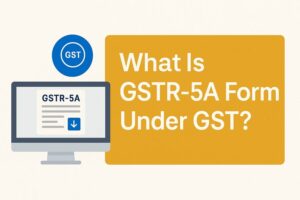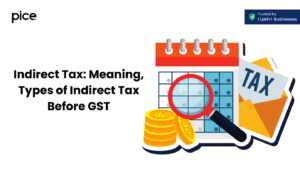FAQ on GSTR 1
- 23 Jul 25
- 14 mins
FAQ on GSTR 1
Key Takeaways
- GSTR-1 is a mandatory return for reporting outward supplies under GST.
- The due date is the 11th (monthly) or 13th (quarterly) of the following period.
- Late filing attracts a penalty of ₹50 per day, even for Nil returns.
- Exports, SEZ, and deemed exports must be reported in specific tables (6A, 6B, 6C).
- Errors in GSTR-1 can't be revised but can be rectified in later returns.
What is the meaning of GSTR-1 filing?
All normal and casual taxpayers are required to file GSTR-1 on a monthly/quarterly basis. It is the statement of 'Outward Supplies'. Through this return filing process, the concerned taxpayer is able to present the details of sales made within a month.
GSTR-1 consists of crucial information, including advances that are received, sales made and advances that are adjusted. It also comprises the relevant details, including that of a Sales Invoice (debit and credit notes).
What is the due date for filing GSTR-1?
For the monthly filer, the due date for the monthly tax filing process of GSTR-1 is the 11th of every following month. So, a liable taxpayer must file their GSTR-1 for the sales made in the month of July, either on or before the 11th of August.
The requirement differs in the case of quarterly filing. In the case of quarterly filing, the due date is the 13th day of the month succeeding the end of every quarter. So, for the quarter January to March, the due date for quarterly filers will be 13th April, 2025.
What are the penalties for not filing GSTR-1?
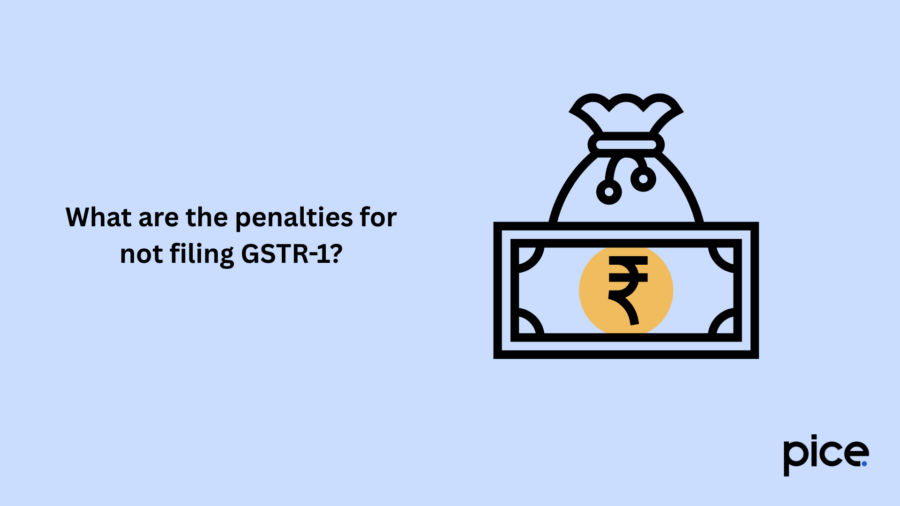
Businesses are mandatorily required to file GSTR-1 regularly. There may be circumstances where no sales are made at all; even in such a scenario, the registered taxpayer is required to file a 'Nil Return'. A late penalty fee of ₹50/day is applicable for days of delays in filing the GSTR-1 and exceeding the established due date.
How do I file a NIL Return under GST?
Nil details are updated in the B2C section, after which a ‘Summary’ is generated through the online mode. Post generation of this summary, you must submit as well as file a return using the EVC/DSC option.
Who is required to file GSTR-1?
All registered taxable persons, except individuals who come under the category of Composition Scheme/Input Service Distributors/Persons liable to deduct tax under Section 51/Persons liable to collect tax under Section 52/Suppliers of online information and database access or retrieval services (OIDAR), are required to file GSTR-1. This must be done on a monthly and quarterly basis, as per preference chosen.
What relevant details should be provided for GSTR-1 filing?
Here are the details that must be provided while filing the Form GSTR-1:
● Information regarding Sales to SEZ
● Invoices and information about Supplies to registered individuals
● Credit or Debit Note information
● Summarised information and invoices of supplies to unregistered individuals (customers)
● Information regarding outward sales and services
● Summary of the supplies, specified HSN-wise
● Summary information of the advance received for future supplies and adjustments required to be made (if any)
● Exempted, Nil-rated, as well as Non-GST Supply details
What is the meaning of a credit note?
A credit note is essentially a document issued against the invoice if the recipient of the goods or services returns them to the supplier in question. It may also be created if the invoice value is reduced, compared to the values reflected previously (i.e. a higher value).
What is a debit note?
Debit notes are categories of documents that are issued against invoices, given that the real invoice value is lower in comparison to the value of goods or services. If the value of an invoice must be increased, the creation of a debit note shall be initiated to note the difference in values.
How to revise the Form GSTR-1?
Once you have filed a GSTR-1 return, you shall not be able to revise it under GST. Instead, to account for and rectify a mistake made during the return filing process, you will have to do it through the GSTR-1A, which is filed for the same time period in form (monthly or quarterly). According to the 10th of July, 2024 CGST notification, this step must be completed before you proceed to actual filing GSTR-3B for the same time period.
What are B2B and B2C supplies?

B2B (Business to Business) supplies refer to the class of supplies made by one registered business to another. B2C (Business to Customer) Supplies, on the other hand, are those supplies which are extended by a registered business to a non-registered individual/consumer.
Should I report credit and debit notes of B2C transactions in the Form GSTR-1?
Yes, you must provide details regarding the B2C credit notes and debit notes in the Form GSTR-1, Table 9B. This is applicable in the case of inter-state sales going above ₹2.5 lakh. In scenarios other than that, you are not required to report it on the 'Invoice level'. However, you may need to report it net off in the respective sale table.
When should I opt for quarterly GSTR-1 filing?
One may opt for quarterly GSTR-1 filing in case their annual turnover for the previous year soared at ₹1.5 crore or less.
What is the acceptable format for numbering invoices in GST?
The acceptable format for numbering the invoices is specified as per Rule 46 (b) of the CGST Rules 2017. A tax invoice issued by a registered person must include a serial number that is unique for each financial year. This serial number can be in one or more series and may contain up to 16 characters. It may include letters, numbers and permitted special characters such as hyphens (“-”) and slashes (“/”), or any of its combinations.
Can I modify the invoices of GSTR-1?
A taxable person will be able to make changes to or delete the invoices of GSTR-1 any number of times until they submit the GSTR-1 for a specific tax time period.
What to do if a few invoices are missed during GSTR-1 filing?
You may not have provided certain invoices in your GSTR-1. Even though you cannot change the scenario for that particular tax period, you will have the option to rectify or add the invoices in the following tax period. This shall be valid until September of the upcoming financial year (6 months post-end of the FY).
For example, if you happen to miss invoices in your GSTR-1 for January 17, you shall report the same in your GSTR-1 of February 17 or any month until September 17, while filing the return.
How is the supply type made to SEZ treated under the GST system in India?
SEZ units and developers are legally registered taxpayers with their respective GSTINs. Therefore, businesses treat supplies made to them as ‘normal business-to-business transactions.’ The registered taxpayer reports via the 'Supplies' section. However, note that businesses categorize SEZ supplies as zero-rated supplies. As a result, the taxpayer must add a SEZ flag to such invoices or transactions.
How are exports treated under the GST system in India?
The exports are categorised as ‘inter-state zero-rated supplies’. So, here are the 2 options available to the registered taxpayer:
• They can initiate export without proceeding with the payment of integrated taxes; they can then claim the ITC refund on such exports.
• Taxpayers can pay the entire IGST amount, which shall include exports, with the tax payment; they can later claim a refund.
What is the meaning of zero-rated supply in the context of GSTR-1?
Zero-rated supplies refer to the category of supplies which do not attract GST, neither as tax liabilities nor as ‘Input Tax’. Here are the 2 types of ‘supply’ which fall under this category:
● Exports
● Supplies made to SEZ Units/Developers
What are Nil-rated supplies in the context of GSTR-1?
Nil Rated supplies attract a GST percentage but at the rate of 0%. So, these supplies are mentioned as in the HSN list, only next to a 0% rate of GST. NIL-rates supplies may include fresh fruits and vegetables, salt, human blood and others.
How are e-commerce supplies treated under the GST system in India?
Registered taxpayers shall declare the details regarding their supplies which are effected through e-commerce. They must also provide the relevant GSTIN of the e-commerce portal.
What table to fill in GSTR-1 in case I have conducted sales with an unregistered individual?
In case, sales are made to an unregistered person, one must enter the report in GSTR-1, Table 7. The information must be provided in a consolidated manner, rate-adjacent for every intrastate/inter-state sale, below ₹2.5 lakh.
In case of interstate sale, if the sale value is above ₹2.5 lakh, the associated information must be reported in Table 5.
Why is the HSN important to the Form GSTR-1?
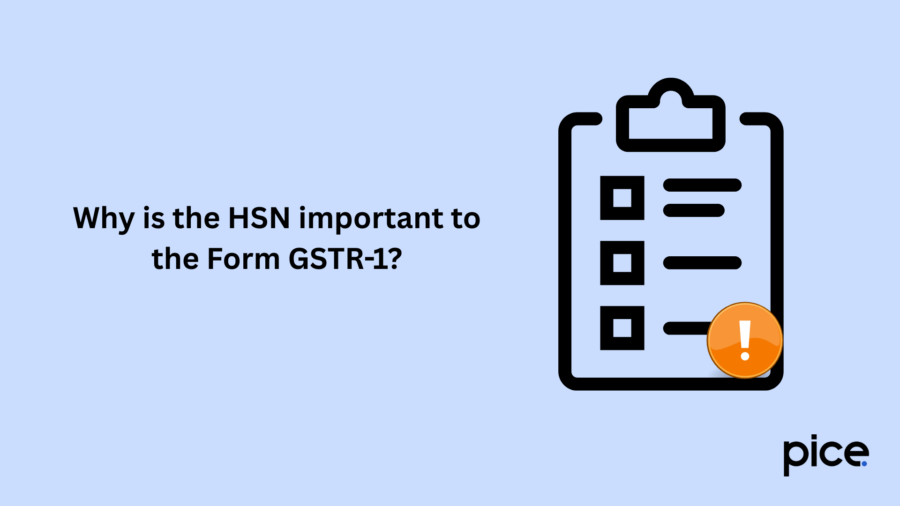
The HSN code is significant within the context of GSTR-1. It is essentially responsible for identifying the tax slab of a specific product. The first 2 digits of the HSN Code indicate which category the respective goods come under. Tax rates are levied as per the same. So, make sure to type in the appropriate HSN Codes and HSN-wise summary in the Form GSTR-1.
How to claim refunds for exports under GST, as an exporter?
In order to claim refunds for exports as an exporter, you shall have to file the export invoices in Table 6A of Form GSTR-1. Input the relevant information and attach the necessary documents to support the transactions made.
You must also file the GSTR-3B to claim this refund. Specify any export-related details, same as you did in Form GSTR-1. Finally, you shall receive a confirmation email notifying you of the successful submission of your file.
Where should I report the SEZ sales?
Exports, deemed exports as well as zero-rated supplies, must be reported in Table 6 of Form GSTR-1. SEZ sales shall particularly be declared in the GSTR-1 Table 6B.
How is GSTR-1 different from GSTR-3B?
A registered taxpayer files GSTR-1 to declare the ‘Outward Supplies’ they make within a specific month or tax period. They use this form to declare all their sales through credit notes, debit notes and invoices.
On the other hand, the taxpayer uses the GSTR-3B to calculate and declare the tax liability and input tax credit for a specific month, based on the values reported in GSTR-1 and GSTR-2A.
Is the declaration of credit and debit notes mandatory?
Yes, it is mandatory for you to declare the credit and debit note in Form GSTR-1. This is so because the same contributes towards the ultimate calculation of ITC and tax liability in GSTR-3B.
How does tax apply to exports and supplies to SEZ units or developers?
The exports and supplies to SEZ units/developers come under the zero-rated supplies category. Therefore, no GST is levied on them. However, one can claim a ‘duty drawback’ paid as input upon the goods’ export. Claim duty drawback as:
● Supply goods which come under bond/LUT without the actual IGST payment, claiming the refund of unutilized ITC
● By paying the entire IGST amount and claiming it as a refund of the paid tax
Where to report Exports, Supplies to SEZ and Deemed Exports in the Form GSTR-1?
One may declare exports, supplies to SEZ and seem exports via:
● Exports: Table 6A
● Supplies to SEZ Unit/SEZ Developer: Table 6B
● Deemed Exports: Table 6C
What to do if I cannot view the invoices I uploaded in Form GSTR-1?
In case you are unable to view the invoices you have uploaded in Form GSTR-1, generate the GSTR-1 summary via the portal. You may then check for the record of invoices and are likely to find them there.
How many decimal points should I cover to accurately declare the value of goods under GST?
You shall declare decimal points up to 2 digits of the values in your Form GSTR-1.
How can I declare exempt supplies through e-commerce in GSTR-1?
You can declare the exempt supplies through a consolidated summary mentioned in the ‘NIL Rated’ section and the ‘Exempt Supplies’ field in GSTR-1.
What is the meaning of ‘deemed exports’ in the context of Form GSTR-1?
Deemed Exports refer to those supplies which the Indian Government considers to be 'exports,' regardless of the fact that these supplies do not physically leave the country. The Indian Government specifically mentions the items that fall under this category and treats them as 'Supplies' accordingly.
What is the meaning of ‘Job Work’ under GST in India?
‘Job work’ refers to the undertaking of the completion of a job, relieving the principal manufacturer. The work is taken over by a smaller manufacturer.
Here is an example for better understanding: a manufacturer of shirts shall send the shirts to a small manufacturer (the job worker in this case) to sew in the buttons.
How are the goods sent for job work reported in the form GSTR-1?
The principal manufacturer shall file Form GST ITC-04 on a quarterly basis, declaring the information regarding goods sent over for job work. Note that the said goods should be accompanied by a challan as formulated by the principal manufacturer. The associated details of the challans should be declared via the forms GSTR-1 and GST ITC-04.
Where to declare the Nil-Rated, Exempted or Non-GST Supplies in Form GSTR-1?
You shall declare your nil-rated, exempted or non-GST supplies to either registered or unregistered individuals, via Table 8 of Form GSTR-1.
Does the Form GSTR-1 play a role in claiming GST returns?
Yes, Form GSTR-1 does play a significant role if you want to claim GST returns. The actual filing of GSTR-1 and declaration of the appropriate information regarding exports/zero-rated supplies via Form GSTR-1, Table 6, is a requirement if you wish to claim a refund on the supplies.
- What is the significance of Table 7 in Form GSTR-1?
Table 7 of Form GSTR-1 applies to 'Taxable Supplies to Unregistered Individuals'. In this particular table, one may declare all the supplies made to unregistered dealers, including:
● 7A: Taxable intra-state supplies
● 7A(1): Consolidated rate-wise information regarding intrastate supplies as made to the unregistered individual through an e-commerce operator
● 7A(2): Rate-wise and operator-wise information about supplies as they were made in 7A (1) via the e-commerce operator, attracting tax collection at the source
● 7B: The supplies below ₹ 2.5 lakh are classified as Inter-state supplies to the unregistered dealers
● 7B(1): Rate-wise and State-wise information about Inter-state supplies with an invoice value below ₹2.5 lakh
● 7B(2): Rate-wise and operator-wise information about supplies as specified in 7B(1) via the e-commerce operator for TCS
💡If you want to streamline your invoices and make payments via credit or debit card or UPI, consider using the PICE App. Explore the PICE App today and take your business to new heights.
 By
By 







